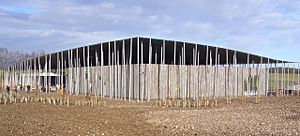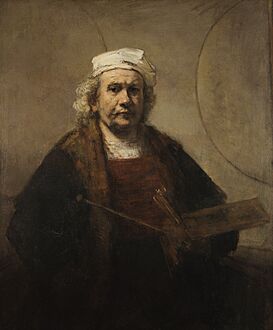English Heritage facts for kids

English Heritage's logo
|
|
| Predecessor | The Historic Buildings and Monuments Commission for England, also known as English Heritage |
|---|---|
| Formation | 1 April 2015; Preceding English Heritage government agency, formed 1983 |
| Type | Charity |
| Registration no. | 1140351 |
| Headquarters | The Engine House, Swindon |
|
Region
|
England |
| Fields | Heritage |
|
Membership (2022/23)
|
1.18 million |
|
Chairman
|
Gerard Lemos |
|
Chief Executive
|
Dr. Nick Merriman, OBE |
|
Revenue (2023/24)
|
£141 million |
| Expenses (2023/24) | £155.4 million |
|
Staff (2023)
|
2,507 |
|
Volunteers (2023)
|
4,922 |
English Heritage is a charity that looks after over 400 amazing historic places in England. These include very old sites like Stonehenge, grand medieval castles, and even Roman forts. They also manage historic industrial sites and beautiful old houses.
The charity's main goal is to "bring the story of England to life" for millions of people every year. Some of their most famous sites are Stonehenge, Dover Castle, Tintagel Castle, and parts of Hadrian's Wall. English Heritage also runs the famous London blue plaque scheme. This scheme puts special blue signs on buildings to show where important historical figures once lived or worked.
English Heritage started in 1983 as a government body. Its job was to protect England's heritage and manage historic properties. Over time, it combined with other groups that looked after historical records. On April 1, 2015, English Heritage split into two parts. One part, called Historic England, now handles the legal and protection side of heritage. The other part, the new English Heritage Trust, became a charity. This charity continues to manage the historic properties and uses the well-known English Heritage name and logo. The government gave the new charity £80 million to help it become independent. Even though the charity manages them, the historic properties still belong to the state.
Contents
History of English Heritage
How English Heritage Began
For many centuries, different government groups were in charge of looking after England's historic places. This responsibility moved from one department to another over time. The government's legal duty to protect historic sites goes back to the Ancient Monuments Protection Act 1882. Later, systems were set up to protect different types of heritage, like listing important buildings after the Second World War.
In 1983, the government decided to create a new, semi-independent group to manage England's historic environment. This group was called The Historic Buildings and Monuments Commission. It officially started on April 1, 1984. Soon after, its first chairman, Lord Montagu of Beaulieu, gave it the easier-to-remember name: English Heritage.
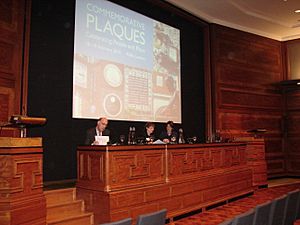
English Heritage also created special lists for historic parks and gardens in 1984. They added a list for historic battlefields in 1995. These lists help protect these important places when new building plans are made. In 1999, English Heritage joined forces with other groups that kept records of England's history. This brought together huge amounts of information, including archaeological records and millions of old aerial photographs. This made English Heritage one of the biggest public archives in the UK. Many of these records are now available online.
In 2002, English Heritage also became responsible for historic shipwrecks and underwater landscapes near the English coast. In 2006, they took over the job of managing the system for listing historic buildings. However, the final decision to list a building still rests with the Secretary of State for Culture, Media and Sport.
Around 2010, English Heritage was confirmed as the government's main advisor on historic places. It was also the biggest source of grants (money) for heritage projects, not including lottery funds. However, the organization faced budget cuts during the 2010s. This meant they had a lot of repairs to do on their sites that they couldn't afford.
Becoming a Charity
In June 2013, the British Government announced a big change. They planned to give English Heritage an £80 million grant to help it become a self-funding charity. This meant it would rely less on government money. The historic properties themselves would still belong to the public. However, the new English Heritage charity would be in charge of managing them.
This change happened on April 1, 2015. The part of the old English Heritage that dealt with planning and protecting heritage became a separate government body called Historic England. The new English Heritage Trust took over the care of the historic properties and the visitor experience at these sites. The new trust has a special agreement to manage these properties until 2025.
England's National Collection
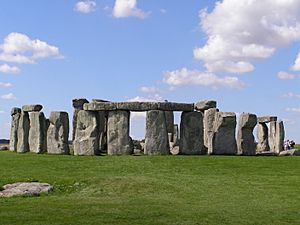
English Heritage looks after more than 400 historic sites and monuments. Some of the most famous ones include Stonehenge, Osborne, Iron Bridge, Tintagel Castle, and Dover Castle. Many of these sites charge an entry fee. However, over 250 properties are free to visit, like Maiden Castle, Dorset and St Catherine's Oratory.
These sites are part of a larger collection of over 880 historic places across the UK. The British Government gathered these places between the 1880s and 1970s. This "National Collection" includes England's most important prehistoric and medieval sites that are no longer in active use. It's like a national art gallery, but for historic buildings and archaeological sites.
Unlike some other heritage groups, English Heritage has few properties that are fully furnished. However, Charles Darwin's home and Brodsworth Hall are important exceptions. New sites are rarely added to the collection now. Other charities are encouraged to look after new historic places. Recent additions include Harmondsworth Barn in 2011 and Carrawburgh Roman Fort in 2020.
English Heritage manages these properties in different ways. Most are looked after for the Secretary of State for the Department for Culture, Media and Sport. This means the government still owns the land. Other properties are owned by English Heritage itself, other government departments, or the Crown Estate.
In 2013–14, about 5.73 million people visited the staffed sites. Over 713,000 free educational visits were made by schools and groups. In February 2024, English Heritage announced that more families than ever were visiting their sites. The number of family visits had grown by 50% in the last ten years. 2023 was a record-breaking year for many sites, including Tintagel Castle.
Selected Collection Highlights
-
J. M. W. Turner: A Coast Scene with Fishermen Hauling a Boat Ashore
Funding English Heritage
As a charity, English Heritage gets its money from several sources. This includes fees from people visiting its properties and membership fees. They also earn money from things like catering, holiday cottages, and shops. Donations and grants also help fund their work. To help them get started as a charity, the government provided £80 million in yearly payments until 2023. This money helped cover the cost of repairs needed at the sites.
Before becoming a charity, English Heritage was a government body. Most of its funding came directly from the government. For example, in 2013–2014, over half of its income came from government grants. The rest came from things like property admissions, food and retail sales, and memberships.
The charity's plan was to reduce its need for government money each year. They aimed to need no government payments by 2022/23.
Becoming a Member
People can join English Heritage as "members." Being a member offers benefits like free entry to their properties. Members also get special access to events. They can also visit properties managed by similar groups in Wales (Cadw), Scotland (Historic Environment Scotland), and the Republic of Ireland (Office of Public Works) for free or at a reduced cost. In 2014/15, English Heritage had 1.34 million members. However, members do not have voting rights or direct influence over how the charity is run.
English Heritage often asks for public opinions on specific issues. For example, they have asked for views on the Stonehenge road tunnel project. Anyone can share their thoughts, not just members.
Volunteering with English Heritage
English Heritage welcomes volunteers to help with their work. Volunteers can do many different jobs. These include helping visitors in historic rooms, running educational workshops, and gardening. They also help with cleaning historic items and doing research.
In 2014/15, the number of regular volunteers reached 1,872. This was an increase from 1,473 volunteers in 2013/14.
The 1066 March
In 2016, English Heritage organized a special event to celebrate the 950th anniversary of the Battle of Hastings. This battle was a key part of the Norman Conquest of 1066. They created the 1066 March, which went from Clifford's Tower in York to Battle Abbey in East Sussex. A team of volunteers completed this long journey in just over three weeks. They arrived at Battle Abbey on October 14, 2016.
Management and Leadership
English Heritage is guided by a board of trustees. These trustees decide the charity's main direction and make sure it achieves its goals. The chairman, Gerard Lemos, leads the board. Other trustees include Sarah Staniforth, Vicky Barnsley, and others.
The day-to-day running of the charity is handled by the chief executive, Nick Merriman. He is supported by a team of eight directors. In 2013/14, before it became a charity, English Heritage had 2,578 staff members.
The Blue Plaque Scheme
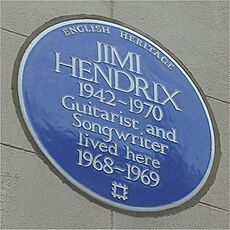
English Heritage has managed the famous blue plaque scheme in London since 1986. These blue plaques are placed on buildings in the capital. They show that a historically important person lived or worked there. English Heritage continues to run this scheme even after becoming a charity in 2015.
For a short time starting in 1998, English Heritage tried putting plaques outside London. Some plaques were put up in places like Merseyside and Birmingham. However, this trial scheme ended in 2005.
Many other plaques, sometimes also called "blue plaques," exist across the UK. These are put up by local councils, historical groups, or individuals. English Heritage does not manage these other plaques. There is a public list of many of these plaques available online at Open Plaques.
Youth Engagement
Since 2018, English Heritage has run a very successful project called Shout Out Loud. This project helps young people explore historic sites and collections across England. It helps them discover new stories from the past. By listening to young people's ideas, this program makes sure their voices are heard. It helps young people feel included and gives them creative ways to get involved with English Heritage. Shout Out Loud was first funded by the National Lottery Heritage Fund.
Shout Out Loud worked with many partners between 2018 and 2022. These included Photoworks, the Council for British Archaeology, National Youth Theatre, and Sound Connections. They completed several important projects together. For example, "Reverberate" connected youth groups with local heritage. "England's New Lenses" was a photography project. "The Ancestors" explored the history of Black prisoners of war. "Our House" looked into LGBTQ+ history at Eltham Palace. "From Ordinary to Extraordinary" helped young archaeologists share local history.
Shout Out Loud won the 2019 UK Heritage Award for "Our House." It was also a finalist for the 2022 Museums and Heritage Award for its overall community engagement program.
Young people can still get involved with the youth engagement program. They can join online projects or creative opportunities. These are often shared on the @eh_shoutoutloud Instagram channel. Young people can also join projects as part of a youth group. There are ongoing schemes like "Young Associates" (for ages 16–25) and "Young Producers" (for ages 18–25). Paid six-month work placements are also offered once or twice a year. Young people who have done these placements have gone on to work for organizations like the BBC and the National Trust.
See also
 In Spanish: English Heritage para niños
In Spanish: English Heritage para niños
- Battle of the Beanfield
- Castles in Great Britain and Ireland
- Festival of History
- Historic Chapels Trust
- List of English Heritage properties
- List of monastic houses in England
Similar Organisations
- Cadw
- Historic Environment Scotland
- Manx National Heritage
- National Trust for Places of Historic Interest or Natural Beauty


